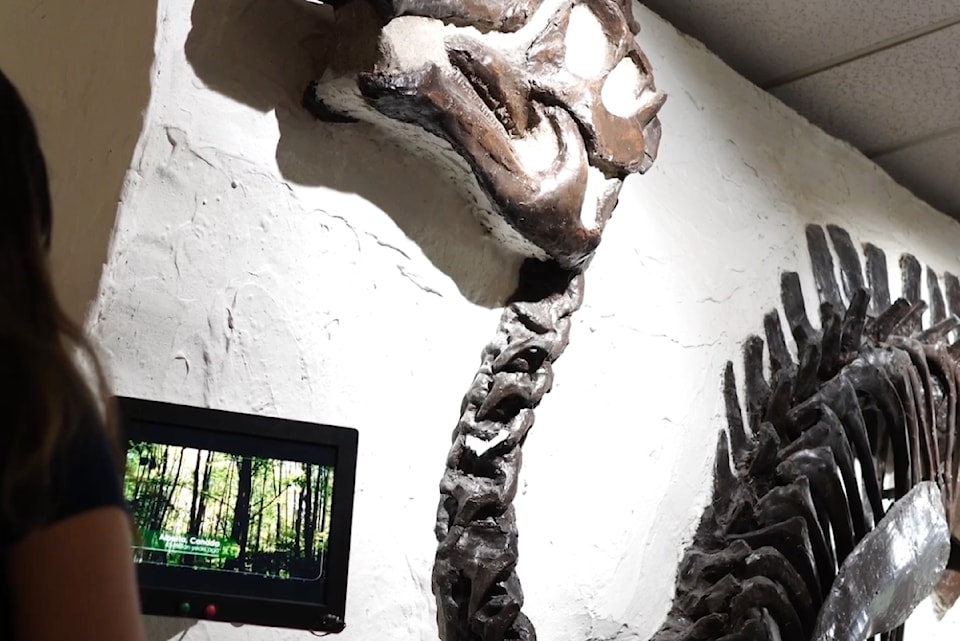A new exhibit at UBC's Pacific Museum of Earth invites visitors to "consider deep time ... through the narrative of life at the edge of a mass extinction event," using dinosaurs a hook.
On Tuesday (June 18), UBC unveiled the new exhibit that will open to the public on July 2.
Pacific Museum of Earth director Dr. Kirsten Hodge said the museum has always wanted to do a dinosaur exhibit as it can be a powerful hook to bring in visitors. She said Life on the Edge is an opportunity to start a conversation about the resilience and vulnerability of life of Earth.
"Telling this very familiar narrative of the dinosaur extinction, which most people are familiar with, know that story that an asteroid hit the planet and set off a whole series of natural disasters. One of which was this global winter that went on for several years that disrupted whole food chains, and essentially, led to the extinction of non-avian dinosaurs."
She said the museum is trying to take a different angle, using the metaphor of "life at the edge" of a big change. Life on the Edge is set 76 million years ago, in the Campanian age of the late Cretaceous period.
"The dinosaurs were at this edge of a big change, and our humans are at this edge of a big change.
A goal of the exhibit is to promote action in people to react now to the ongoing climate crisis.
"While the dinosaurs didn't have the power to stop the asteroid and the ensuing disasters that happened, we have the power to – and agency to – take action and change and adapt to this current situation that we're in."
Earth, she said, has been through many big changes in its 4.5 billion years, and this is one of them.
The exhibit's scene depicts a daspletosaurus torosus chasing a dromaeosaurus away from stealing its prey — a chasmosaurus — like a bear shooing a crow away from its prey, Hodge said.
The museum received a fossil cast of a daspletosaurus torosus, which is an older relative of the tyrannosaur. The daspletosaurus torosus. It could grow up to 10 metres long and weighed up to four tonnes. The daspletosaurus torosus was an apex predator until an asteroid hit Earth, leading to a rapid shift in climate, ending the dinosaur age.
It lived in what is now Alberta, and along the border with B.C., about 70 million years ago, but this dinosaur cast is made from a skeleton from Montana. Hodge said the museum wanted a local connection, while also being a big, impressive skeleton.
The smaller dinosaur is a dromaeosaurus albertensis, which was a medium-sized dromeosaur, weighing around 35 lbs, that lived from 80 to 69 million years ago. It's commonly referred to as a raptor.

